-
BY THE NUMBERS
-
22/10
Polling Day: Voting is open from 7am to 8pm, after which media outlets will release their exit poll forecasts. Most of the official results will be known the same night.
48
Number of times Japan has called a general election since 1890.
465
Total number of seats up for contest in Japan's Lower House, down from 475 after electoral boundaries were redrawn in rural areas to ensure voting parity.
289
Number of single-seat constituencies, where MPs are elected in the "first-past-the-post" system.
176
Number of seats allotted to the proportional representation "party list" system.
18 and above
First Lower House election since the legal voting age was lowered last year from 20 to 18.
1,180
Total number of eligible candidates.
WORLD FOCUS
Election campaign, the Japanese way
Political parties out in force ahead of Sunday's polls, which are expected to be won by Abe's ruling coalition
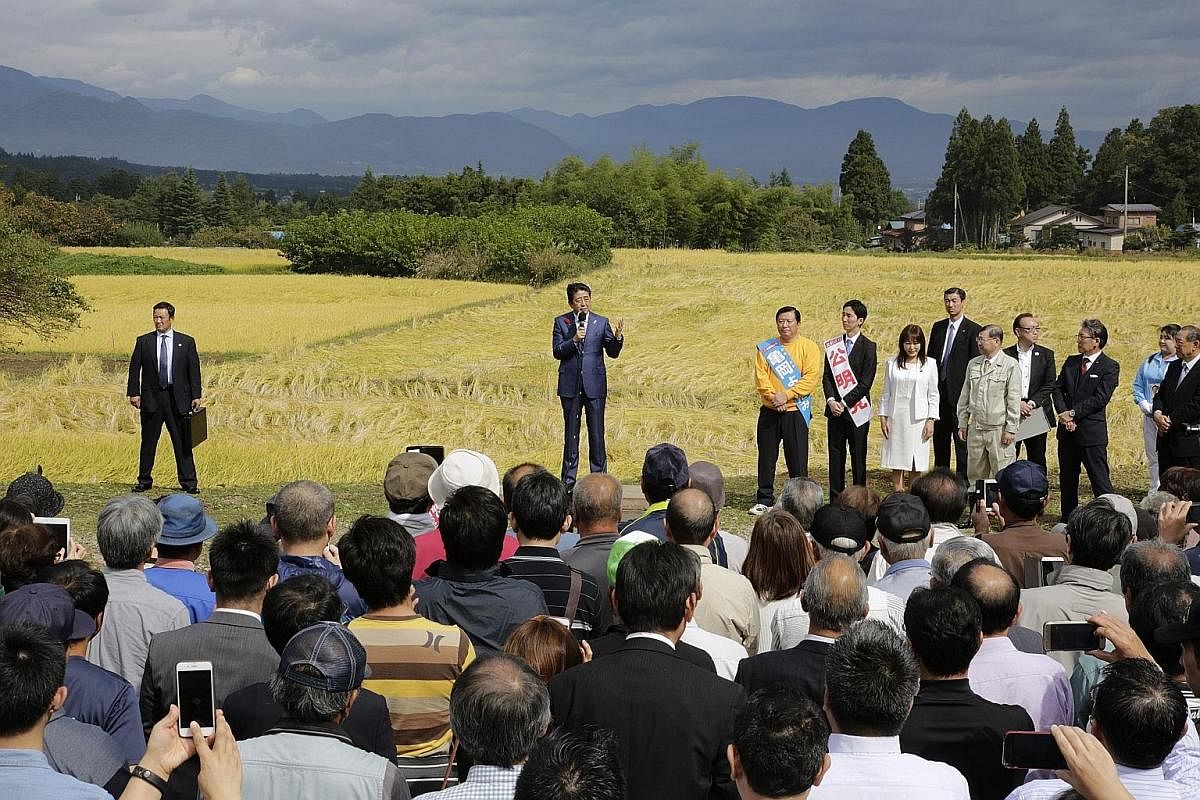
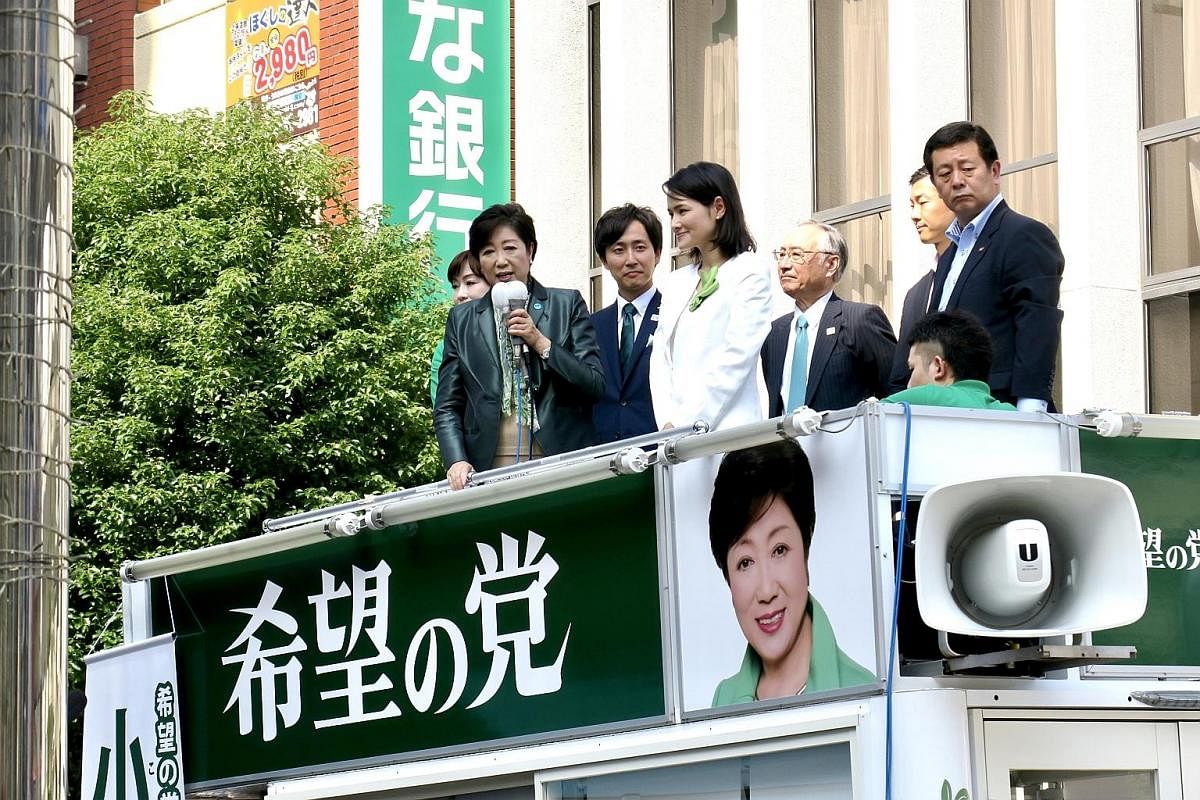
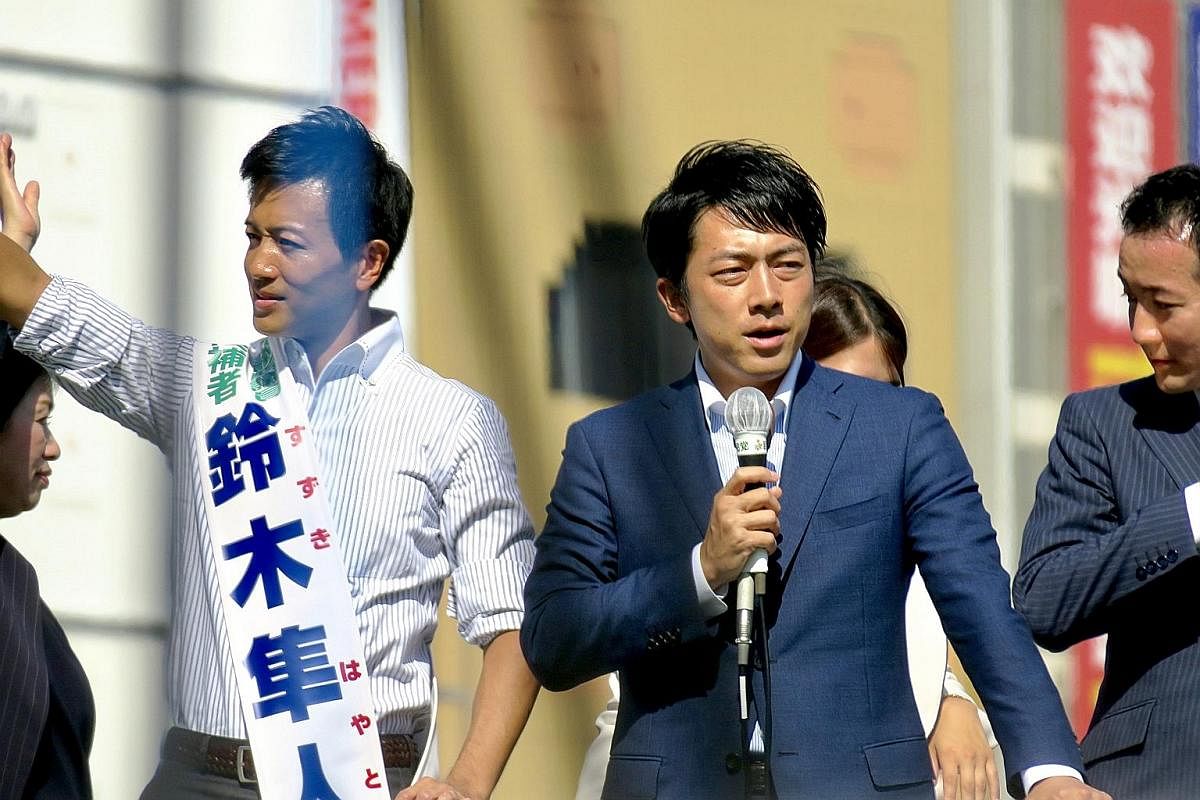
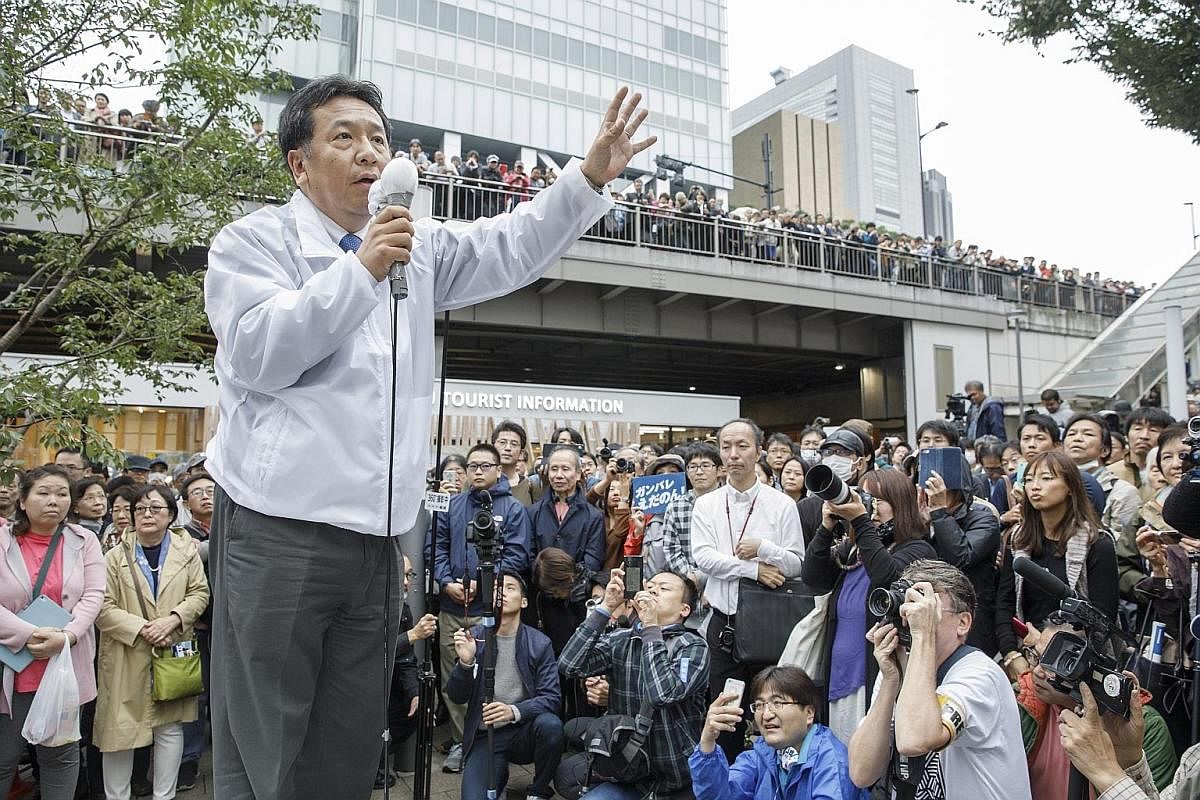
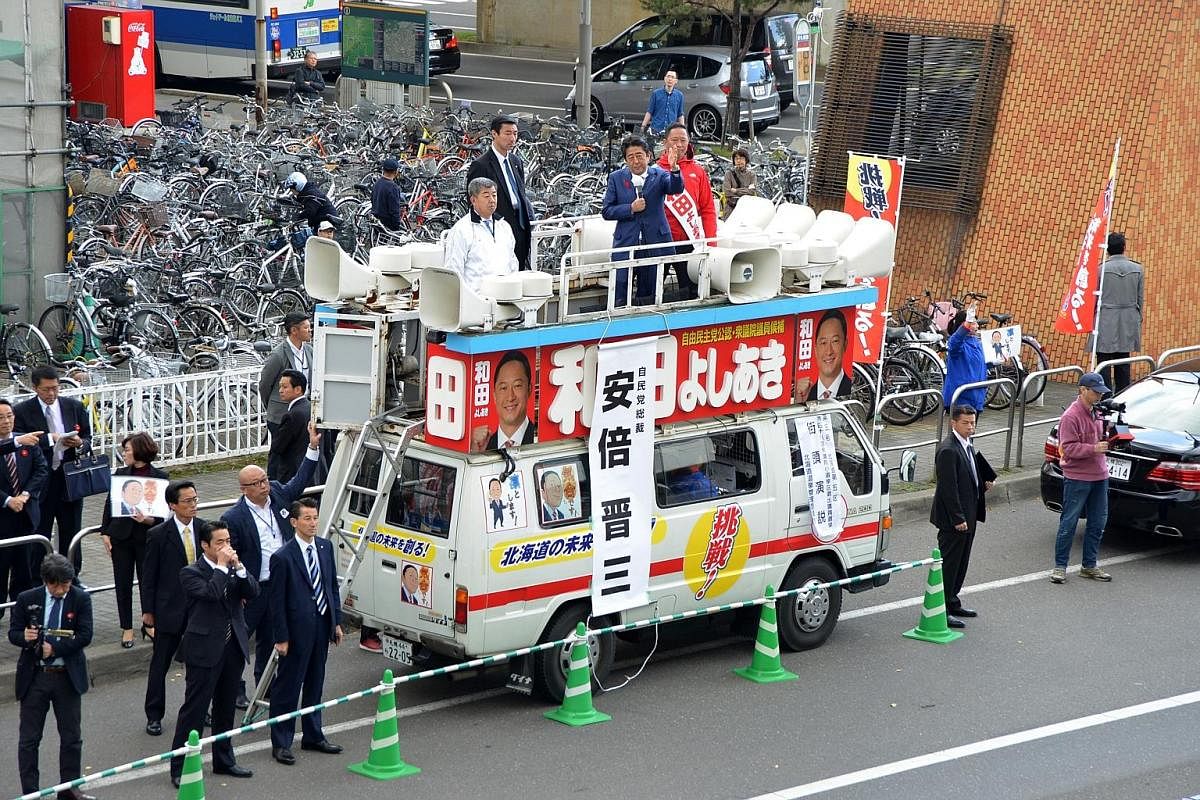
A sound truck weaves through traffic, blaring campaign messages and lobbying for votes as the candidate, often wearing white gloves, waves to passers-by.
This is electioneering, Japan style, where door-to-door soliciting is banned outright, as are rallies between 8pm and 8am. There are also caps on the number of fliers (70,000 per candidate) that can be distributed during the election campaign, and even the number of party volunteers (up to 15) allowed at each rally.
The world's third-largest economy is abuzz with election hype as it gears up for national polls on Sunday, with media surveys predicting a big win for the ruling Liberal Democratic Party (LDP) despite the unpopularity of Prime Minister Shinzo Abe.
Campaigning in Japan remains a traditional affair - online canvassing was allowed only from 2013 - and very much unlike the grand events elsewhere, including Singapore, where rallies are held at large stadiums or open fields.
In Japan, stump speeches typically occur at high-traffic sites outside shopping malls or train stations and are over within 45 minutes - by law.
Candidates, usually backed by a party leader, will speak atop of a party truck to passers-by. Along with the campaign posters pasted up in each ward, these are by far the most visible ways for candidates to reach voters.
-
LOWER HOUSE CANDIDATE BREAKDOWN BY PARTIES
-
(Numbers in brackets indicate strength in previous Parliament)
Ruling coalition
• Liberal Democratic Party
332 (290)
• Komeito
53 (34)
Conservative opposition
• Kibo no To (Party of Hope)*
235 (57)
• Nippon Ishin no Kai (Japanese Innovation Party)
52 (14)
Liberal opposition
• Constitutional Democratic Party of Japan (CDP)*
78 (15)
• Japanese Communist Party
243 (21)
Independents and other opposition parties
187 (41)
* Though newly formed, Kibo no To and CDP took in lawmakers mainly from the Democratic Party, which is not fielding candidates this time.
Dr Yu Uchiyama of the University of Tokyo tells The Straits Times that campaigning laws in Japan help to ensure political neutrality, regardless of financial standing.
Executive director Sota Kato of the Tokyo Foundation think-tank says: "Large-scale, orchestrated events like door-to-door campaigning and television commercials require a lot of money, and this would give an unfair advantage to parties that attract the biggest donations."
Door-to-door canvassing has been banned for nearly 100 years, to prevent pork barrel politics, and as a deterrence against corruption.
As such, in Japan, elections are hardly parochial affairs. The autumn rain nationwide last weekend did not deter crowds from turning up to listen to speeches about defence and economic policy.
Much is riding on this election as Japan, under the stewardship of Mr Abe, has grown in international prominence.
At stake is the country's ties with the United States under its bilateral alliance. Mr Abe is arguably the world leader most chummy with US President Donald Trump, who is due to visit Tokyo in 21/2 weeks, and both men have been in lockstep over issues such as North Korea.
Also at stake is Mr Abe's trademark "Abenomics" mix of economic policies, as well as Japan's trade policy. It has taken the lead in the 11-nation Trans-Pacific Partnership pact - which Singapore is a part of - after the US pulled out.
Meanwhile, under Mr Abe, Japan has been pushing for stronger security legislation and has allowed its troops to engage in "collective self-defence" abroad.
And yet the LDP enters the snap election - called over a year ahead of schedule - at a delicate time, coming months after Mr Abe was implicated in two cronyism scandals and the Defence Ministry was battered by a major cover-up.
After plunging during the scandals, Mr Abe's ratings have been on the uptick of late. But his disapproval ratings still outstrip his approval ratings in several surveys. One, by the Nikkei last week, showed 48 per cent of Japanese disapproved of Mr Abe's government while only 37 per cent approved.
And yet, the same survey said the odds of a repeat of the disaster that befell Mr Abe's British counterpart Theresa May in June, after her failed gambit on snap polls, are low as the opposition challenge to the Prime Minister fizzles out.
It expects the ruling LDP and its coalition partner Komeito to win about 300 of the 465 seats up for grabs.
Two parties have been formed to challenge the LDP in a major realignment of Japan's political scene and splintering even further the fractured opposition led by the Democratic Party (DP).
Tokyo Governor Yuriko Koike's Kibo no To (Party of Hope), which took in the DP's conservative members, quickly faded after she refused to throw her hat into the ring. The party, as of now, has no prime ministerial pick and is seen as an ideological carbon copy of the LDP.
Both the LDP and Kibo no To are in favour of constitutional revision, unlike the new left-leaning Constitutional Democratic Party of Japan and the far-left Japanese Communist Party.
Two groups of voters hold considerable sway: the 18-and 19-year olds who will get to vote after the voting age was lowered from 20 last year, and the large swathes of undecided voters - if they show up.
Yet, contrary to popular opinion that young people lean towards the opposition, a survey by the Mainichi daily released last week showed higher support for the LDP among teenagers and those in their 20s and 30s, as compared to older voters.
The report quoted a 19-year-old undergraduate from Hokkaido as saying: "We have experienced the job crisis since we were young. With the government improving the economy and job opportunities, many in my generation apparently don't think it's necessary to go out of our way to (vote for change)."
But while media surveys forecast big wins for the LDP, at least three in 10 remain undecided over who to vote for.
Retiree Teruko Usui, 78, a long-time LDP voter, told The Straits Times last Tuesday after attending LDP and Kibo no To rallies that she is not convinced by Mr Abe's explanations over his scandals, and is uncertain if she can trust the LDP.
She said she voted for Ms Koike in local elections, but is also unconvinced by her track record as a leader and, as such, is hesitant to vote for Kibo no To.
If voters cannot make up their minds, Japan could continue to see low turnout. Only 52.7 per cent of voters cast their ballots in the last Lower House election in 2014.
Corporate sales executive Naoki Ohtani, 27, tells The Straits Times: "I really have no intention to vote because I don't understand the purpose of (Mr Abe calling) the snap election."
He added: "But if I really must choose, I guess I'll go with the LDP."
Join ST's Telegram channel and get the latest breaking news delivered to you.
A version of this article appeared in the print edition of The Straits Times on October 17, 2017, with the headline Election campaign, the Japanese way. Subscribe
